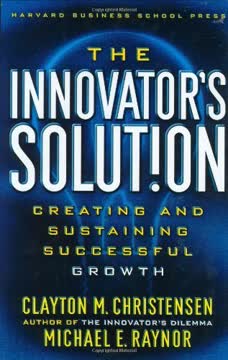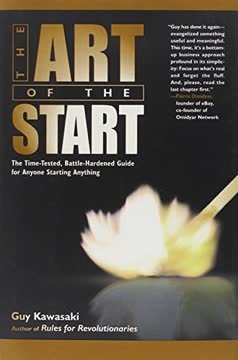つの重要なポイント
1. スタートアップ成功のための顧客開発の重要性
顧客開発の目的は、見込み客から機能リストを収集することでも、多くのフォーカスグループを実施することでもない。
従来の製品開発を再考する。 顧客開発モデルは、まず製品を作り、その後に顧客を見つけるという従来の知恵に挑戦する。代わりに、製品を完全に開発する前に顧客とその問題について学び、発見することを強調する。このアプローチは、誰も欲しがらないものを作るリスクを減らす。
4つのステッププロセス。 顧客開発モデルは以下の4つのステップから成る:
- 顧客発見:顧客の問題とニーズを理解する
- 顧客検証:再現可能な販売プロセスを開発する
- 顧客創造:エンドユーザーの需要を生み出す
- 会社構築:正式な組織に移行する
このプロセスに従うことで、スタートアップはビジネスモデルと製品市場適合性を検証し、スケールアップする前に成功の可能性を大幅に高めることができる。
2. 市場タイプが戦略と実行を決定する
市場タイプはすべてを変える—顧客のニーズ評価や顧客採用率、顧客が自分のニーズを理解する方法、製品を顧客にどのように位置づけるか。
4つの市場タイプ。 スタートアップは一般的に以下の4つのカテゴリーのいずれかに分類される:
- 既存市場への参入
- 完全に新しい市場の創造
- 低コストの参入者として既存市場を再セグメント化
- ニッチプレイヤーとして既存市場を再セグメント化
カスタマイズされた戦略。 各市場タイプは、顧客獲得、販売、マーケティング、財務予測に異なるアプローチを必要とする。例えば、既存市場では製品差別化と市場シェアの獲得に焦点を当てる。新市場では、顧客教育と需要創出が優先される。市場タイプを理解することは、適切な戦略を開発し、成長と収益性に対する現実的な期待を設定するために重要である。
3. 顧客発見が製品市場適合性を検証する
顧客開発の目的は、そのビジョンに対して顧客と市場が存在するかどうかを確認することだ。
建物の外に出る。 顧客発見の最初のステップは、顧客の問題と提案された解決策に関する仮説をテストすることだ。これは、潜在的な顧客と直接対話し、彼らのニーズ、ワークフロー、痛点を理解することを含む。目標は販売することではなく、聞いて学ぶことだ。
反復プロセス。 顧客発見は直線的ではなく反復的である。これには以下が含まれる:
- 顧客とその問題に関する仮説を立てる
- 顧客との対話を通じてこれらの仮説をテストする
- フィードバックに基づいて製品コンセプトを洗練する
- 製品市場適合性が達成されるまでこのプロセスを繰り返す
このフェーズは、実際の顧客のニーズを解決しない製品を作るという高コストのミスを避けるのに役立つ。
4. 顧客検証がビジネスモデルを証明する
仮定をテストする唯一の有効な方法は、製品を販売することだ。
販売ロードマップを開発する。 顧客検証は、再現可能な販売プロセスを作成することに焦点を当てる。これには以下が含まれる:
- 初期採用者(アーリーバンジェリスト)を特定し、販売する
- ポジショニング戦略を開発する
- 販売ロードマップを作成する
- 実際の販売を通じてビジネスモデルを検証する
ピボットまたは進行。 このフェーズの結果は重要である。再現可能な販売プロセスを見つけられない場合やビジネスモデルが収益性がない場合は、ピボットして顧客発見に戻る時である。再現可能な販売プロセスが証明されたときにのみ、スケールアップに進むべきである。
5. 顧客創造が需要を喚起し販売を拡大する
市場タイプは、この移行がどのように行われるかだけでなく、必要なスタッフ、採用、支出のタイプも決定する。
市場特有の戦略。 顧客創造戦略は市場タイプに基づいて異なる:
- 既存市場:製品差別化と積極的なマーケティングに焦点を当てる
- 新市場:顧客教育と市場創造を強調する
- 再セグメント化された市場:独自の価値提案を強調するためのポジショニングとブランディングを使用する
キャズムを越える。 このフェーズは、初期採用者から主流市場への移行の課題に対処する。これには以下が含まれる:
- 適切なマーケティングと販売戦略を開発する
- ローンチ計画を作成し実行する
- 需要創出活動を拡大する
重要なのは、需要創出の努力を市場タイプと市場採用の段階に合わせることである。
6. 会社構築がミッション中心の組織に移行する
迅速対応部門を作成することは、学習と発見の段階から大企業が必要とする機能部門への自然な進化を提供する。
組織を進化させる。 会社が成長するにつれて、初期の顧客開発チームからより構造化された組織に移行する必要がある。これには以下が含まれる:
- 機能部門(販売、マーケティング、事業開発)を作成する
- ミッション中心の文化を育成する
- 機敏性を維持しながらプロセスを実装する
構造と柔軟性のバランス。 課題は、スケールしながらスタートアップのスピードと適応性を維持することである。これは、必要なプロセスを実装しつつ、初期の成功をもたらした起業家精神を維持するための慎重なバランスを必要とする。
7. 迅速対応部門がスケール時の機敏性を維持する
一貫して迅速に意思決定を行い実行できる者は、非常に大きな、しばしば決定的な優位性を得る。
OODAループ。 迅速対応部門はOODAループ(観察、方向付け、決定、行動)を使用して機敏性を維持する:
- 観察:迅速かつ効率的に情報を収集する
- 方向付け:会社のミッションの文脈で情報を分析し統合する
- 決定:迅速かつ分散型の意思決定を行う
- 行動:意思決定を迅速かつ効果的に実行する
意思決定の分散化。 スピードと柔軟性を維持するために、組織のすべてのレベルで従業員に意思決定を委ねる。これには以下が必要である:
- 会社のミッションと目標の明確なコミュニケーション
- 従業員の判断を信頼する
- イニシアティブと失敗から学ぶ文化を重視する
これらの原則を実装することで、企業は成長してもスタートアップのような機敏性を維持できる。
8. 創業者は会社の成長段階に応じて進化する必要がある
皮肉なことに、投資家が主流の顧客に到達するために会社の勢いと柔軟性を維持する必要があるときに、官僚主義を代用することでつまずき、起業家は自分たちが作り出した成功に適応できない。
リーダーシップの進化。 創業者は会社の成長に応じてリーダーシップスタイルを適応させる必要がある:
- 初期段階:学習と発見に焦点を当てたビジョナリーでハンズオンのリーダーシップ
- 成長段階:ミッション中心の管理に移行し、より多くの責任を委譲する
- スケール段階:起業家精神を維持しながらプロセスと構造を開発する
バランスの取れた行動。 創業者にとっての課題は、初期の成功をもたらした情熱とビジョンを失うことなく、自分のスキルと管理スタイルを進化させることである。これには以下が含まれるかもしれない:
- 組織管理や戦略計画などの新しいスキルを開発する
- 創業チームのスキルを補完する経験豊富な幹部を迎える
- 会社のビジョンを実行するために他者を信頼し委任することを学ぶ
成功する創業者は、会社の成長に応じて自分の役割を変える必要があることを認識し、各段階の新しい課題に積極的に適応する。
最終更新日:
FAQ
What's The Four Steps to the Epiphany about?
- Focus on Startups: The book provides a framework for startups to effectively develop products and find customers, emphasizing the importance of understanding customer needs.
- Customer Development Model: Steve Blank introduces the Customer Development model, consisting of four steps: Customer Discovery, Customer Validation, Customer Creation, and Company Building.
- Contrast with Traditional Approaches: This model contrasts with traditional product development, which often leads to failure by not prioritizing customer needs.
- Learning from Experience: The author shares insights from his entrepreneurial journey, illustrating how successful startups follow a repeatable process to mitigate risks and achieve growth.
Why should I read The Four Steps to the Epiphany?
- Practical Guidance: The book offers actionable strategies for entrepreneurs to navigate the uncertainties of starting a new business.
- Foundation for Lean Startup: It is considered a foundational text for the Lean Startup movement, influencing many entrepreneurs and educators.
- Real-World Examples: Steve Blank uses case studies and personal anecdotes to illustrate key concepts, making the material relatable and easier to understand.
What are the key takeaways of The Four Steps to the Epiphany?
- Customer Development is Crucial: Startups must prioritize customer development over product development to understand customer problems and validate solutions.
- Iterative Process: The Customer Development model is iterative, encouraging startups to refine their hypotheses based on customer feedback.
- Market Types Matter: Recognizing which market type a startup falls into can significantly influence its approach to customer acquisition and product development.
What is the Customer Development model in The Four Steps to the Epiphany?
- Four Steps: The model consists of Customer Discovery, Customer Validation, Customer Creation, and Company Building, each focusing on different aspects of customer engagement.
- Iterative Learning: It encourages learning from customers through direct engagement and feedback, refining product offerings and business strategies.
- Separation from Product Development: Unlike traditional approaches, it emphasizes discovering and validating customer needs before product development.
What is Customer Discovery in The Four Steps to the Epiphany?
- Identifying Customer Problems: This phase focuses on understanding who the customers are and what problems they face.
- Testing Hypotheses: Startups formulate and test hypotheses about the product and customer needs with potential customers.
- Earlyvangelists: The concept of "earlyvangelists" refers to customers willing to take risks on new products, crucial for feedback and validation.
What is Customer Validation in The Four Steps to the Epiphany?
- Proving the Sales Roadmap: This phase aims to establish a repeatable sales process and validate the business model.
- Sales Roadmap Development: It involves creating a sales roadmap that outlines how to sell the product effectively.
- Feedback Loop: Gathering feedback from customers to refine the product and sales strategy is essential in this iterative process.
How does The Four Steps to the Epiphany define Customer Creation?
- Focus on Demand Generation: Customer Creation is about generating demand for the product after validating it with early customers.
- Positioning and Messaging: Emphasizes clear positioning and messaging that resonates with target customers.
- Ongoing Process: It requires continuous engagement with customers, adapting strategies based on market feedback and changing needs.
What are the four types of startups mentioned in The Four Steps to the Epiphany?
- Existing Market: Startups introduce a new product into an established market, facing competition from existing players.
- Resegmented Market: Startups redefine or resegment an existing market, offering unique value propositions to specific segments.
- New Market: Startups create entirely new markets with innovative products, often needing to educate customers.
- Low-End Market: Startups target the lower end of an existing market with simpler, cheaper alternatives.
What is the significance of Market Type in The Four Steps to the Epiphany?
- Guides Strategy Development: Market Type influences the strategies a startup should adopt for sales, marketing, and product development.
- Risk Assessment: Helps startups assess risks associated with entering a market, such as competition and market dynamics.
- Resource Allocation: Informs how startups allocate resources to maximize success, tailoring strategies to the Market Type.
What are some best practices for Customer Development outlined in The Four Steps to the Epiphany?
- Engage with Customers Early: Startups should prioritize engaging with customers from the outset to validate their assumptions.
- Iterate Based on Feedback: The process is iterative, requiring startups to adjust their hypotheses based on customer insights.
- Build Relationships with Earlyvangelists: Cultivating relationships with earlyvangelists provides critical feedback and support.
What are the common pitfalls startups face according to The Four Steps to the Epiphany?
- Ignoring Customer Needs: Focusing too heavily on product development without validating customer needs can lead to failure.
- Premature Scaling: Scaling operations before establishing a solid customer base and sales process can lead to unsustainable growth.
- Misunderstanding Market Types: Failing to recognize the market type can lead to inappropriate strategies for customer engagement and product positioning.
What are the best quotes from The Four Steps to the Epiphany and what do they mean?
- "Startups are not smaller versions of large companies.": Emphasizes that startups require different strategies than established businesses.
- "The goal of Customer Development is to discover what customers really want.": Highlights the importance of understanding customer needs for building successful products.
- "No business plan survives first contact with customers.": Underscores the necessity of flexibility and adaptability in the startup process.
レビュー
『The Four Steps to the Epiphany』は、スタートアップにおける顧客中心のアプローチで高く評価されている。読者は顧客発見、検証、市場セグメンテーションに関する貴重な洞察を称賛している。この本は起業家にとって必須とされ、成功するビジネスを構築するための実践的なアドバイスを提供している。一部の人々は内容が濃く、時折冗長であると感じるが、多くの人々はその詳細な方法論と実世界での適用性を評価している。批評家はB2B企業に焦点を当てている点や古い例を挙げている点を指摘するが、全体としてはリーンスタートアップの方法論と顧客開発プロセスの基礎的なテキストと見なされている。
Similar Books















